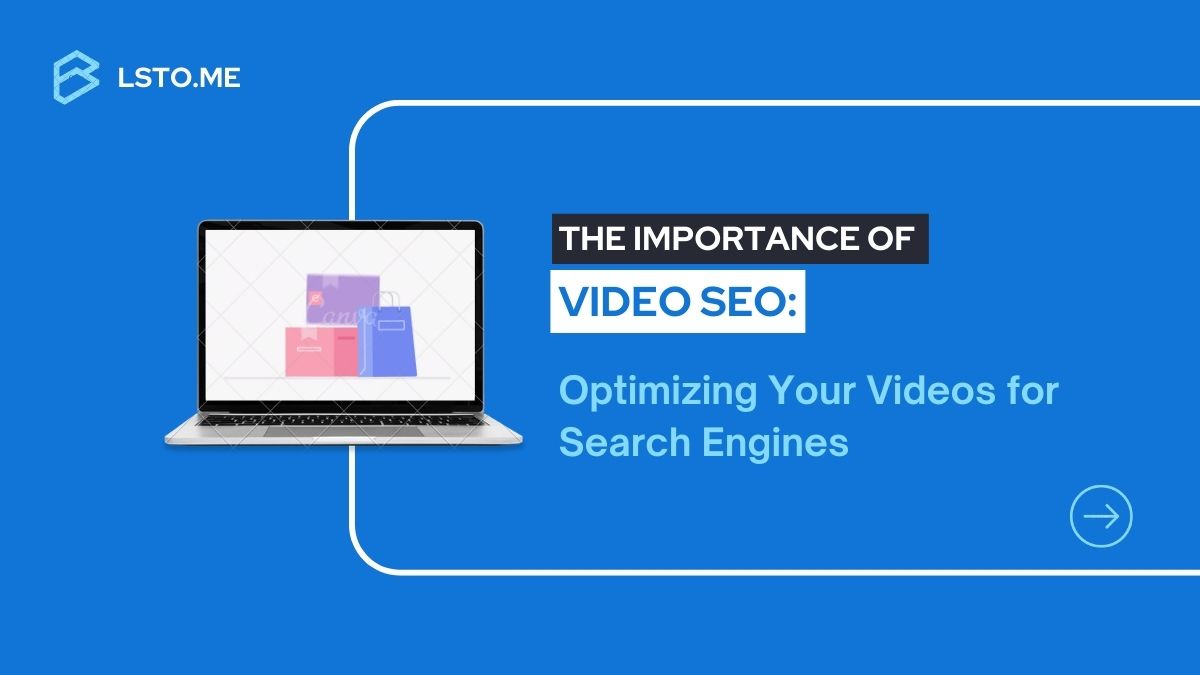
In today’s digital landscape, video content has become increasingly popular and essential for businesses to engage and connect with their target audience. However, creating high-quality videos alone is not enough. To maximize the visibility and reach of your videos, it’s crucial to optimize them for search engines. In this blog post, we will explore the importance of video SEO (Search Engine Optimization) and provide actionable tips for optimizing your videos to improve their search engine rankings and increase organic traffic.
1. Understanding Video SEO:
As video content continues to grow in popularity, businesses and marketers need to understand the importance of Video SEO. With millions of videos being uploaded every day, it can be difficult for your content to stand out. By optimizing your videos for search engines, you can increase visibility and attract a larger audience.
Video SEO involves several elements such as keyword research, metadata optimization, and video engagement metrics. Keyword research lets you understand what your target audience is searching for and helps you optimize your video accordingly. Metadata optimization includes adding titles, descriptions, and tags that accurately describe your video’s content. Video engagement metrics help search engines determine how engaging and relevant your video is to users.
One of the biggest advantages of Video SEO is the ability to drive traffic from different sources including social media platforms like YouTube or Vimeo.
2. Keyword Research: Finding the Right Words
Keyword research is an essential aspect of video SEO that every content creator must master. Without proper keywords, your videos may never reach the intended audience and gain the traction they deserve. So how do you find the right words for your video content? It all starts with researching potential keywords that people are actively searching for.
The first step in keyword research involves using tools such as Google’s Keyword Planner or YouTube Analytics to determine terms relevant to your niche. Once you have a list of potential keywords, analyze their search volume and competition level to determine which ones are worth targeting. Ideally, you want to choose long-tail keywords that are specific to your niche but still have sufficient search volume.
Additionally, consider incorporating location-based or seasonal keywords if they relate to your content. Doing so can help increase visibility among local audiences or during specific times of the year when interest in a particular topic peaks.
3. Optimizing Video Metadata: Titles, Descriptions, and Tags
Optimizing video metadata is crucial for maximizing visibility and driving traffic to your content. This involves crafting compelling titles, descriptions, and tags that are both keyword-rich and informative.
The title of your video is perhaps the most significant metadata element as it serves as the first point of contact with potential viewers. It should be concise yet descriptive while incorporating relevant keywords that accurately reflect the content of your video. Your description should provide a more in-depth overview of what your video entails while also including additional keywords and phrases for optimization purposes. Tags serve as another critical component by allowing search engines to categorize your content based on specific topics or themes.
4. Enhancing Video Engagement: Captivating Thumbnails and Transcriptions
In today’s digital age, video content is king. Every day, millions of hours of video are uploaded and watched on platforms like YouTube. However, with so much content out there, it can be hard for videos to stand out from the crowd and attract viewership. That’s where captivating thumbnails and transcriptions come in.
Thumbnails are small images that represent a video and appear alongside its title in search results or recommendations feeds. A good thumbnail can make all the difference when it comes to catching a viewer’s eye. It should be visually striking, relevant to the content of the video, and accurately convey what viewers can expect from watching it.
Transcriptions are written versions of the spoken content in a video that appears at the bottom of the screen as text captions.
5. Video Hosting and Schema Markup
Video content has taken the world by storm, and it’s not hard to see why. Videos are a great way to engage with your audience while offering valuable information. However, it’s not enough to create compelling videos; you must ensure they rank well in search engines. This is where video SEO comes into play. One of the critical aspects of video SEO is choosing the right hosting platform.
There are numerous video hosting platforms available, such as YouTube, Vimeo, Wistia, and more. Each platform has unique features that can benefit your business in various ways. For instance, YouTube is ideal for reaching a broader audience while Vimeo offers more customization options than most platforms. Therefore, when selecting a platform for hosting your videos, consider your target audience and what you hope to achieve with your videos.
6. Promoting and Sharing Your Videos
Promotion and sharing are crucial aspects of video SEO. It is not enough to create an excellent video with top-notch content. Your target audience needs to view the videos for them to be effective. Therefore, you need to promote your videos across various platforms and share them with your target audience.
One way of promoting your videos is by optimizing their titles and descriptions with relevant keywords. This will make it easier for search engines to index and rank your videos higher in search results. You can also promote your videos on social media platforms such as Facebook, Twitter, Instagram, and LinkedIn, among others. These platforms allow you to reach a wider audience by leveraging the power of social networks.
Another strategy for promoting and sharing your videos is through email marketing campaigns. You can send newsletters or promotional emails featuring links to your latest video content directly to subscribers’ inboxes.
Conclusion:
Optimizing your videos for search engines through effective video SEO is crucial for maximizing their visibility, reach, and engagement. By conducting thorough keyword research, optimizing video metadata, enhancing user engagement with compelling thumbnails and transcriptions, choosing the right hosting platform, and promoting your videos strategically, you can improve your video’s search engine rankings and drive organic traffic to your content. Embrace the power of video SEO to unlock the full potential of your videos and achieve your marketing objectives in today’s competitive digital landscape.




